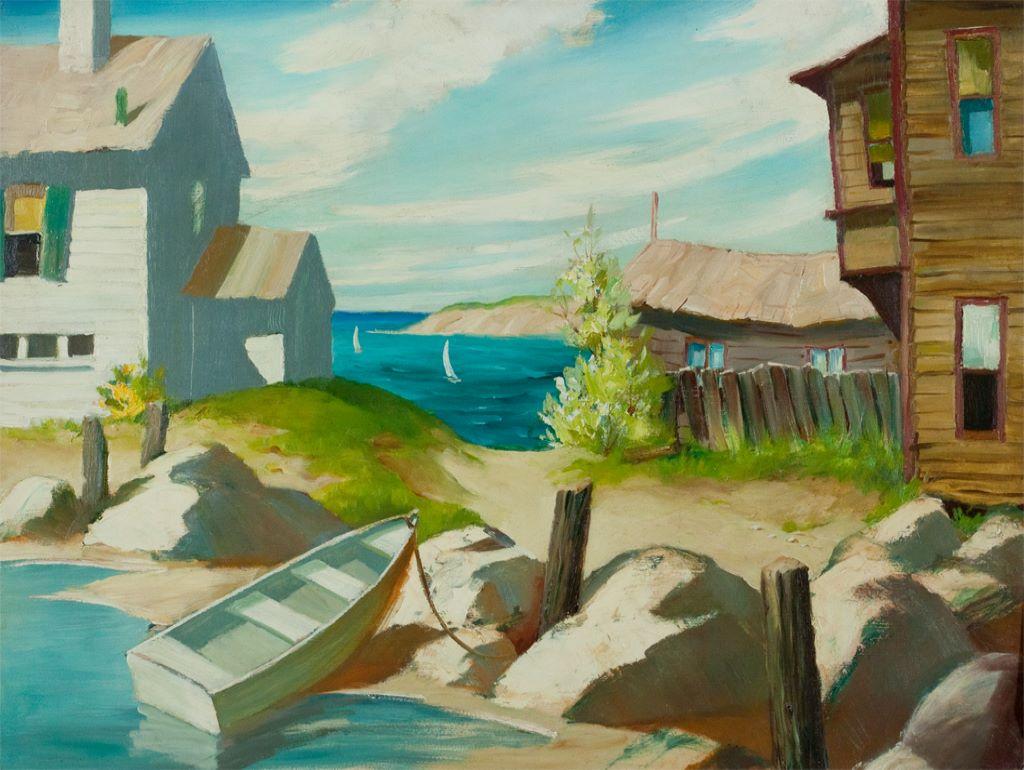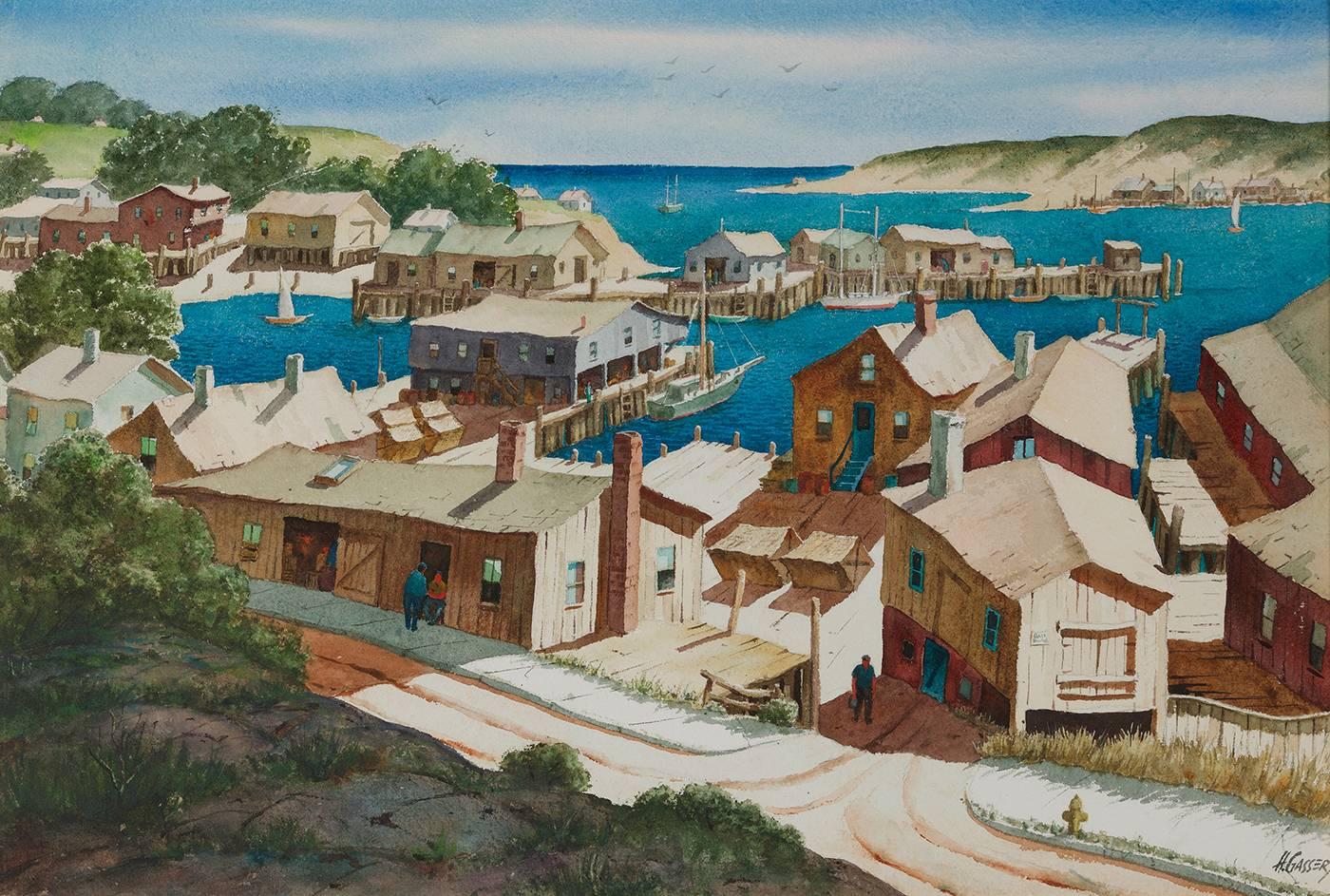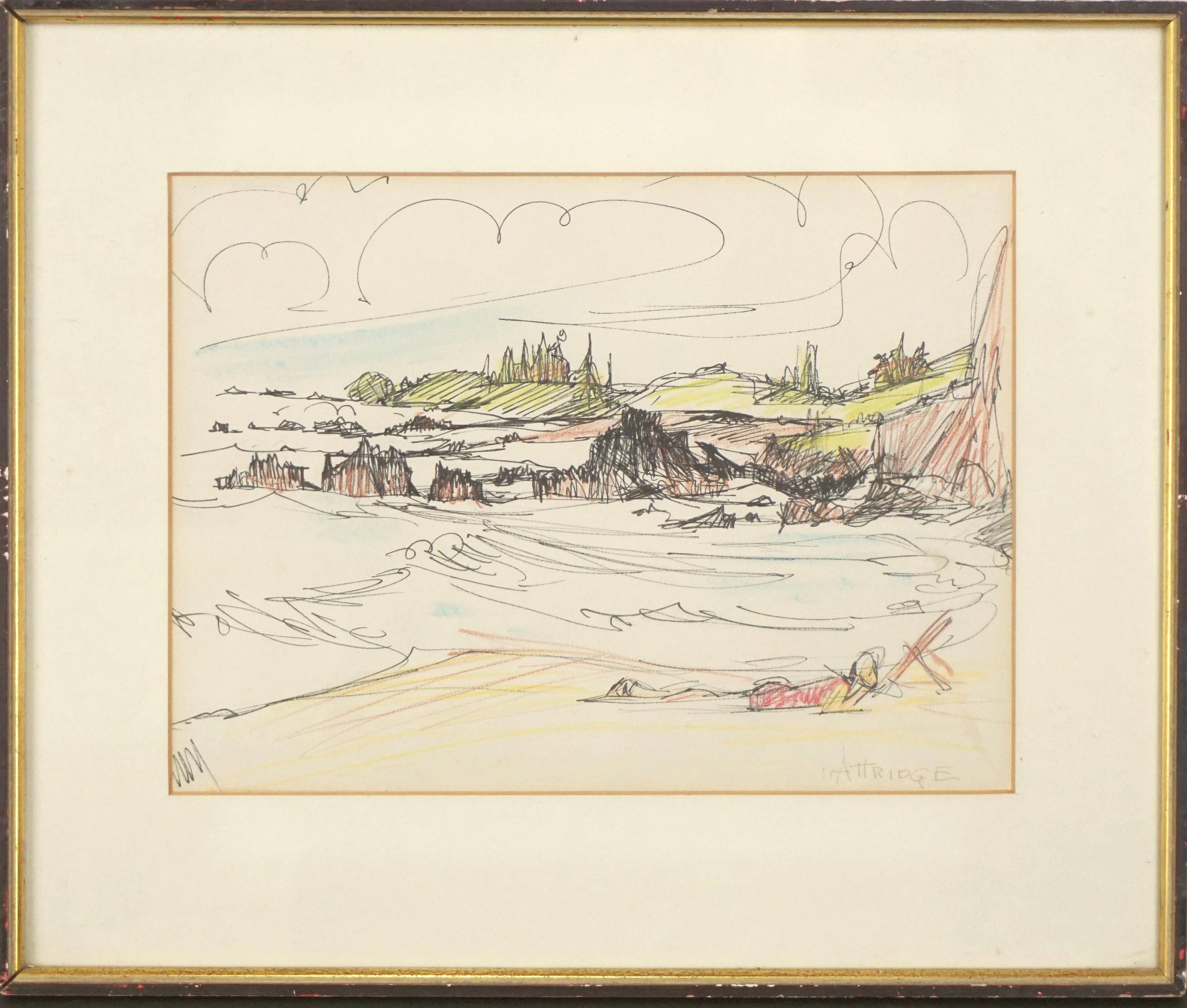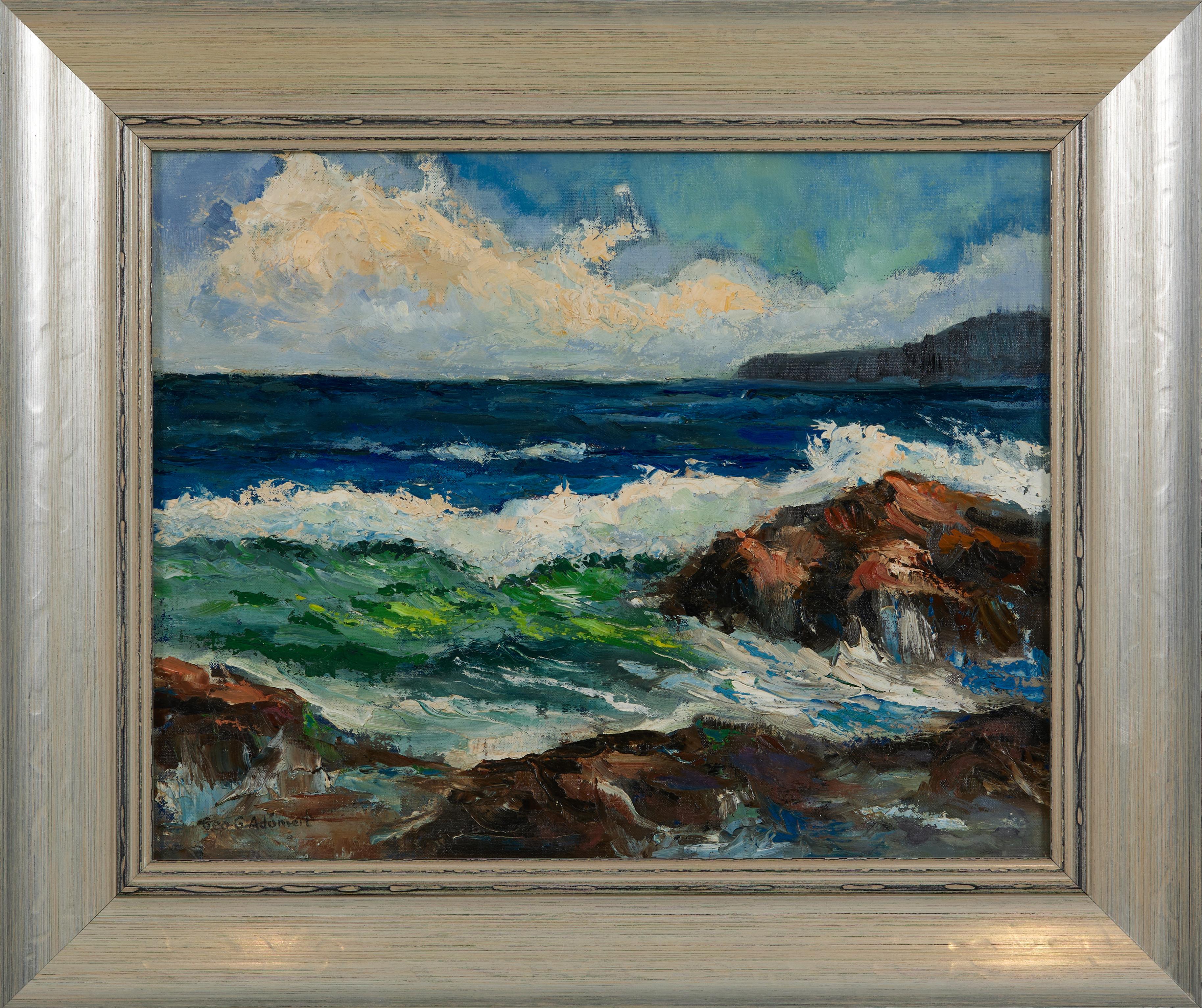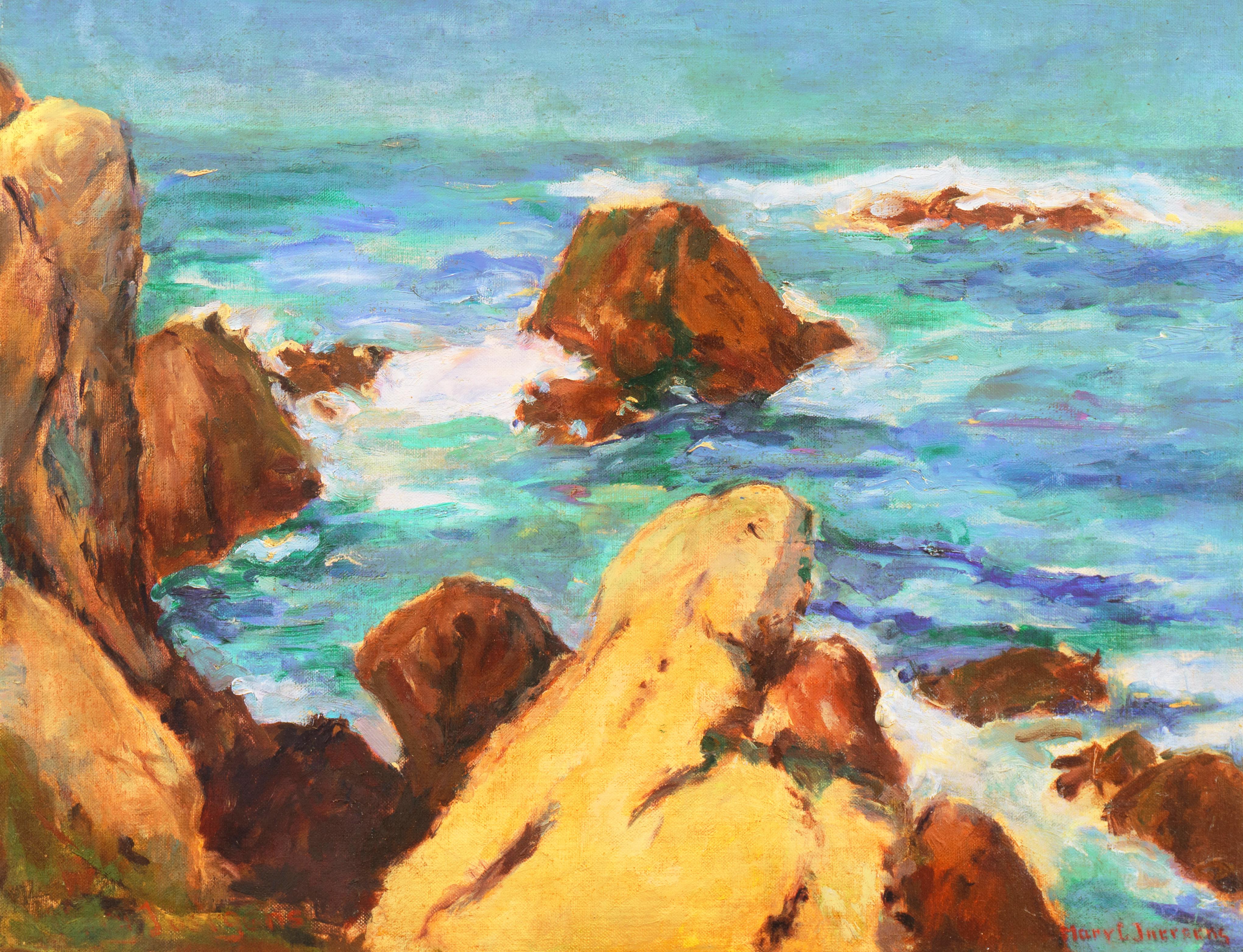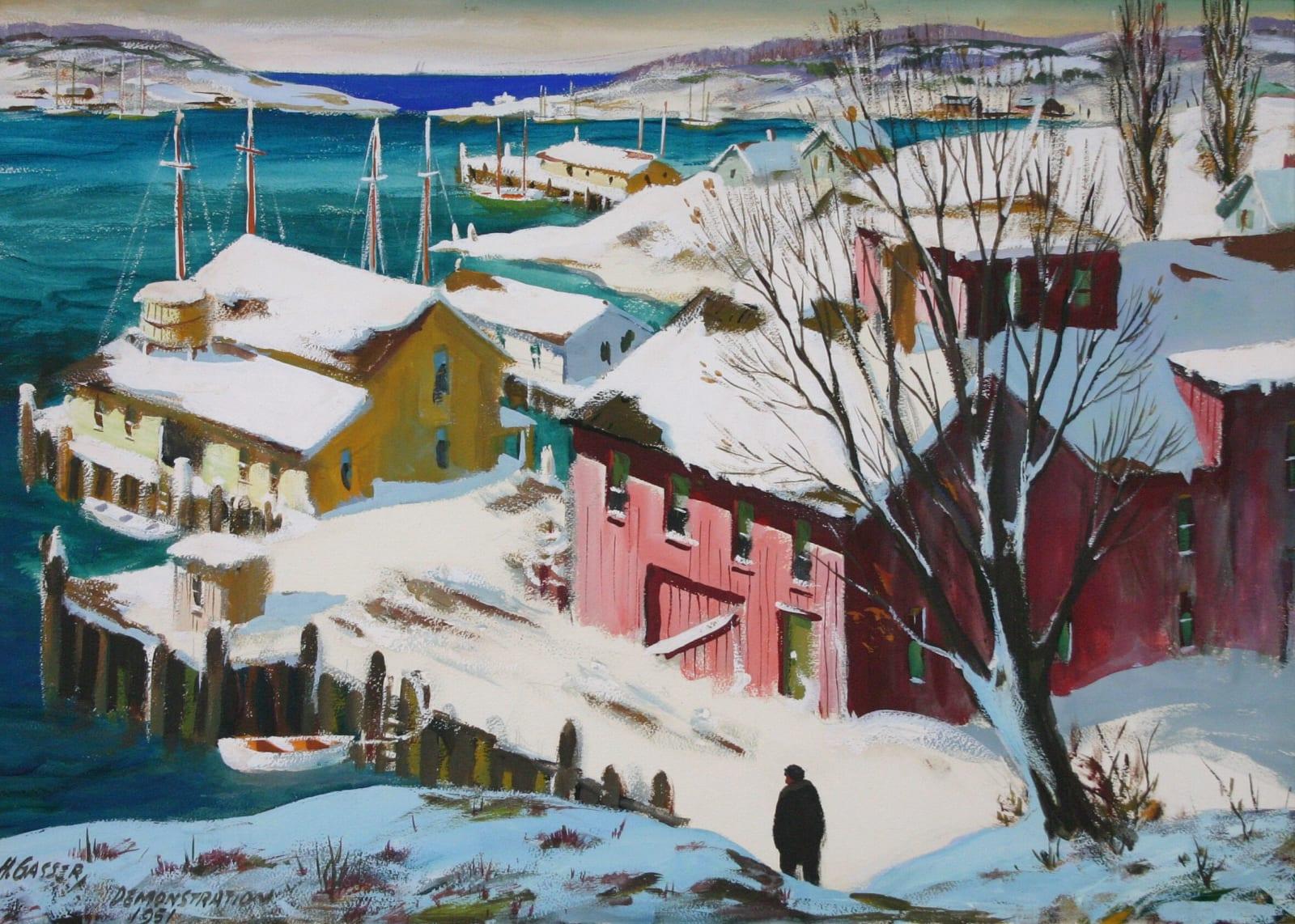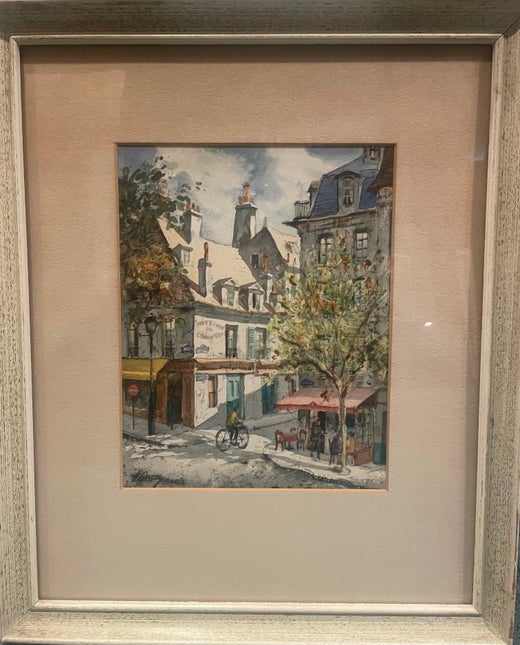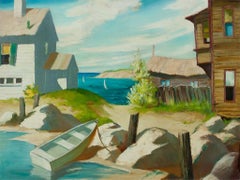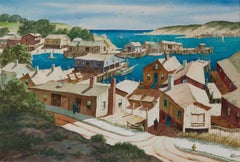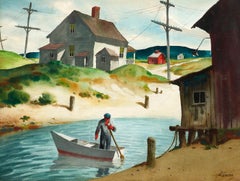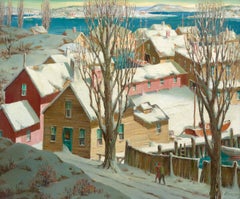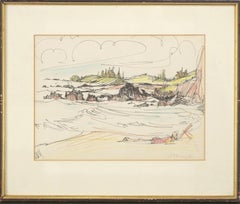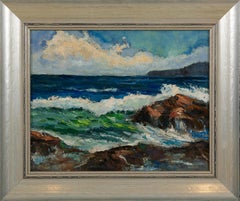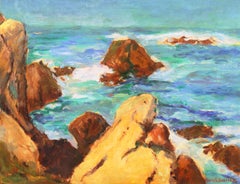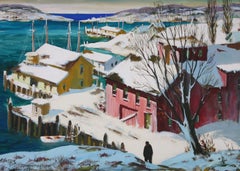Items Similar to On the Seashore
Want more images or videos?
Request additional images or videos from the seller
1 of 3
Henry Martin GasserOn the Seashore
$12,500
£9,519.90
€10,958.69
CA$17,913.51
A$19,599.77
CHF 10,113.43
MX$234,705.16
NOK 128,394.74
SEK 120,293.50
DKK 81,838.68
About the Item
Signed lower right: H. GASSER
- Creator:Henry Martin Gasser (1909-1981, American)
- Dimensions:Height: 9.07 in (23.04 cm)Width: 11.88 in (30.18 cm)
- Medium:
- Movement & Style:
- Period:
- Condition:All works are in good to excellent condition. Detailed condition report available upon request.
- Gallery Location:New York, NY
- Reference Number:1stDibs: LU1192302113
Henry Martin Gasser
Henry Martin Gasser was an American painter in every sense. From his working-class industrial town, he sought out the greatest artists in the area in order to study from them and found inspiration in his backyard. Through persistence and a spirit of originality, Gasser turned humble scenes of urban American life in the mid-twentieth century into extraordinary works of art that were widely praised by the art world. After achieving fame for his paintings, he extended his reach further by educating future artists and writing instructional books on his innovative techniques. Gasser was born in Newark, New Jersey, where he lived for most of his life. He studied painting at the Newark School of Fine and Industrial Arts as well as the Grand Central School of Art and the Art Students League in New York City. The well-known artist John R. Grabach (1886–1981), a fellow New Jersey native, privately tutored Gasser, and the two artists developed a close relationship. Despite its highly individualistic style, Gasser’s work still fits neatly into the tradition established by his American predecessors. In addition to exhibiting influence from Grabach, Gasser’s realist depictions of everyday life continued the legacy of the Ashcan painters. The majority of Gasser’s work portrays his native New Jersey. By the time he reached artistic maturity in the mid-twentieth century, Newark had become a major industrial center. Such cities, although the life force of American industry and ingenuity, were not known for their scenic qualities. Nonetheless, Gasser found beauty in his surroundings. His artworks typically feature urban scenes, such as residential streets lined with houses and blue-collar suburban communities. Along with painting in New Jersey and New York, he embarked on excursions with Grabach to New England to capture coastal views and winter scenery. During World War II, Gasser was stationed in South Carolina as a sergeant in a Visual Aid Unit of the army, where he painted the vibrant Southern culture surrounding him. Although adept at painting with oils, he found his stride in watercolors. Paralleling his ability to transform unassuming subjects into captivating pictures, Gasser elevated watercolor—a medium that was more common at the time for preliminary sketches or commercial use—to a fine art. During his life, Gasser exhibited his paintings widely to remarkable critical acclaim. He was honored with numerous solo exhibitions in New York and New Jersey and was included in group exhibitions at the country’s finest museums and galleries. Gasser won more than one hundred exhibition prizes nationally, including the prestigious Hallgarten Prize awarded by the National Academy of Design. Gasser was actively engaged in the art community, belonging to over twenty organizations, including the Allied Artists of America, the Art Students League, the National Arts Club, and the Salmagundi Club. He served as vice president of both the National Academy of Design and the American Watercolor Society, and designed the latter’s certificate of membership.
About the Seller
5.0
Recognized Seller
These prestigious sellers are industry leaders and represent the highest echelon for item quality and design.
Established in 1995
1stDibs seller since 2012
28 sales on 1stDibs
Typical response time: 1 hour
- ShippingRetrieving quote...Shipping from: New York, NY
- Return Policy
Authenticity Guarantee
In the unlikely event there’s an issue with an item’s authenticity, contact us within 1 year for a full refund. DetailsMoney-Back Guarantee
If your item is not as described, is damaged in transit, or does not arrive, contact us within 7 days for a full refund. Details24-Hour Cancellation
You have a 24-hour grace period in which to reconsider your purchase, with no questions asked.Vetted Professional Sellers
Our world-class sellers must adhere to strict standards for service and quality, maintaining the integrity of our listings.Price-Match Guarantee
If you find that a seller listed the same item for a lower price elsewhere, we’ll match it.Trusted Global Delivery
Our best-in-class carrier network provides specialized shipping options worldwide, including custom delivery.More From This Seller
View AllSunlit Bay
By Henry Martin Gasser
Located in New York, NY
On verso: H GASSER
Category
Mid-20th Century Modern Landscape Paintings
Materials
Oil, Board
Gloucester Vista
By Henry Martin Gasser
Located in New York, NY
Signed lower right: H. GASSER; on verso: “Gloucester Vista” / HENRY GASSER / N.A.
Category
20th Century American Modern Landscape Paintings
Materials
Paper, Watercolor, Gouache
Man in a Rowboat
By Henry Martin Gasser
Located in New York, NY
In his watercolor painting, “Man in a Rowboat,” Henry Martin Gasser paints a man standing in a small boat on a creek between two houses; power lines stretch across the sky above.
Category
1950s Landscape Paintings
Materials
Watercolor, Archival Paper, Pencil
Harbor in Winter
By Henry Martin Gasser
Located in New York, NY
Henry Martin Gasser paints a coastal harbor town blanketed in white snow in his artwork entitled, “Harbor in Winter.”
Category
Mid-20th Century Landscape Paintings
Materials
Canvas, Oil
Coastal Scene
By George Clough
Located in New York, NY
In his oil painting, “Coastal Scene,” George Lafayette Clough depicts two children resting beside a seaside path, while figures in the backgrou...
Category
Mid-19th Century Landscape Paintings
Materials
Canvas, Oil
$35,000
The Quarry, New Harbor Maine
By George J. Stengel
Located in New York, NY
Signed lower left: G. J. Stengel
Category
20th Century American Impressionist Landscape Paintings
Materials
Oil
You May Also Like
Mid Century Modern Mixed Media Painting -- Day at the Beach
Located in Soquel, CA
Wonderful mid century mixed media coastal/figurative in loose/painterly style by Irmal Gertrude Attridge (American, 1894-1962), circa 1950. Signed lower right. Presented in vintage frame under glass (included as-is). Image size: 9"H x 12"W.
Irma Gertrude Attridge was born in Chicago and studied at Chouinard Art Institute in Los Angeles with Henry McFee and Oscar Van Young. Member of Calif. AC; AEA; Cal. WC. Soc.; Women Painters...
Category
1950s American Realist Landscape Paintings
Materials
Ink, Watercolor, Color Pencil, Laid Paper
Coastal Scene, 20th Century Seascape, Cleveland School Artist
By George Adomeit
Located in Beachwood, OH
George Gustav Adomeit (American, 1879-1967)
Coastal Scene
Oil on canvas
Signed lower left
19 x 23 inches
21.5 x 25.5 inches, framed
A major painter of American scene subjects, Georg...
Category
20th Century American Modern Figurative Paintings
Materials
Oil
'Coastal Breakers', Post-Impressionist Mid-century Oil, Woman Artist
Located in Santa Cruz, CA
Signed lower left and lower right "Mary Juergens" (American, 20th century) and painted circa 1960.
An Impressionist-style oil seascape showing a dramatic view of azure and jade wate...
Category
1960s American Impressionist Landscape Paintings
Materials
Oil, Board
Cape Ann Harbor
Located in Bryn Mawr, PA
Signed lower left: H. Gasser / Demonstration / 1951
Provenance
Private collection
Painter, lecturer, teacher, illustrator and author, Henry Gasser was born in Newark, New Jersey on...
Category
20th Century American Modern Landscape Drawings and Watercolors
Materials
Watercolor
Antique American Impressionist New England Coastal Beach Stroll Oil Painting
Located in Buffalo, NY
Antique American impressionist coastal painting by Clarence Braley (1854 - 1927). Oil on canvas, circa 1900. Signed. Displayed in a period modernist ...
Category
Early 1900s Impressionist Landscape Paintings
Materials
Canvas, Oil
$10,000 Sale Price
20% Off
New England Beach Scene American Boston School Painter GL Noyes
By George Loftus Noyes
Located in Rockport, MA
Oil on panel
Dimensions: 8"x10" without frame, 15"x17" with frame
Signed lower left: G.L. Noyes
A fabulous New England beach scene by GL Noyes. Noyes’s exceptional ability to captur...
Category
19th Century American Impressionist Landscape Paintings
Materials
Oil
More Ways To Browse
Place De Concorde Painting
Rene Menard
Robert Stone Painting
Russian Impressionism
Shipwreck Painting
Suzanne Crochet
Texas Longhorn Vintage
William Goliasch
1993 Kelly
19th Century Landscape Moonlight
Alaska Painting
Anglada Camarasa
Antique Horse Plough
Anton Mauve
Betty Blue
British Landscape Female Artist
Brooks Anderson
California Flowers Painting
